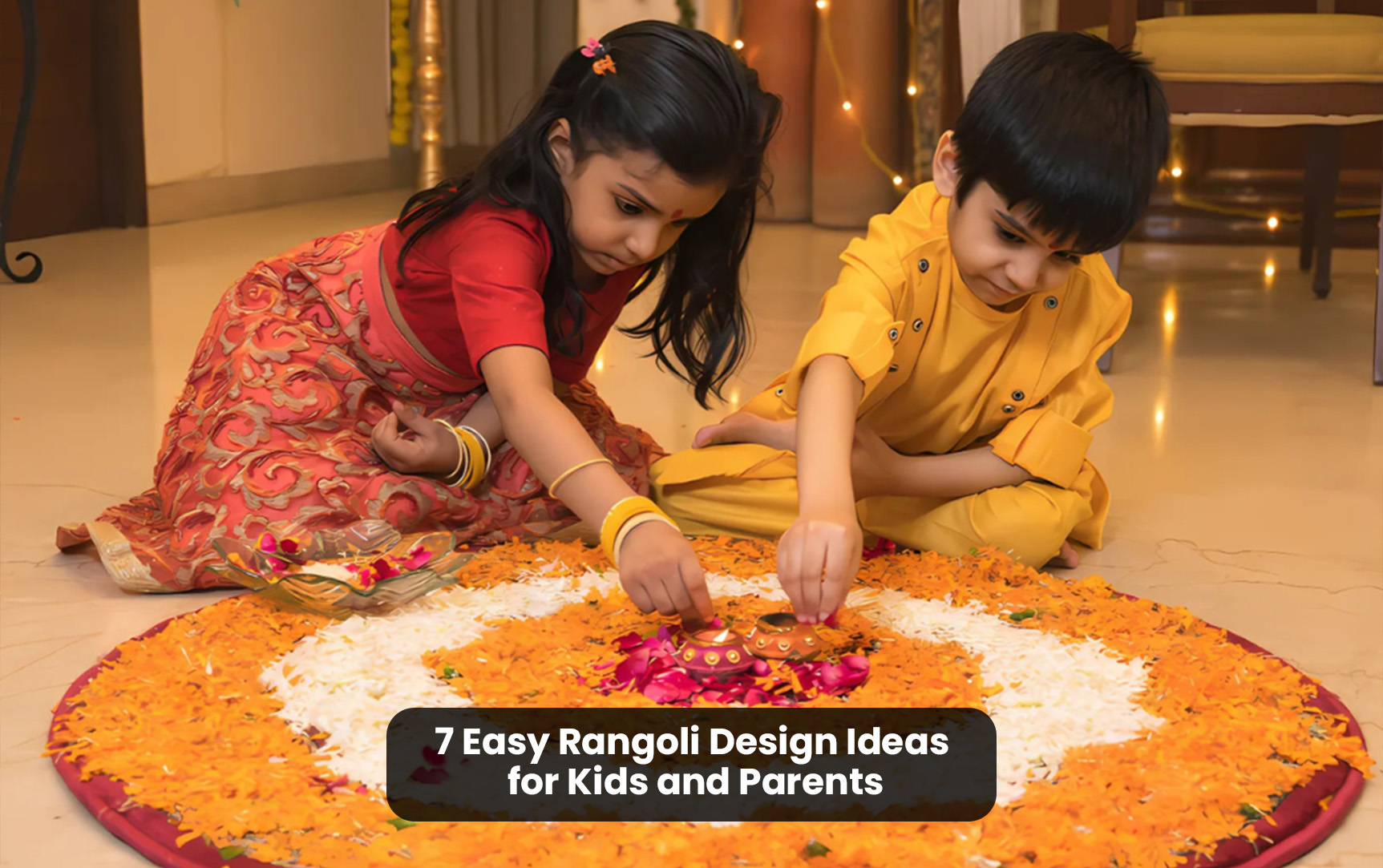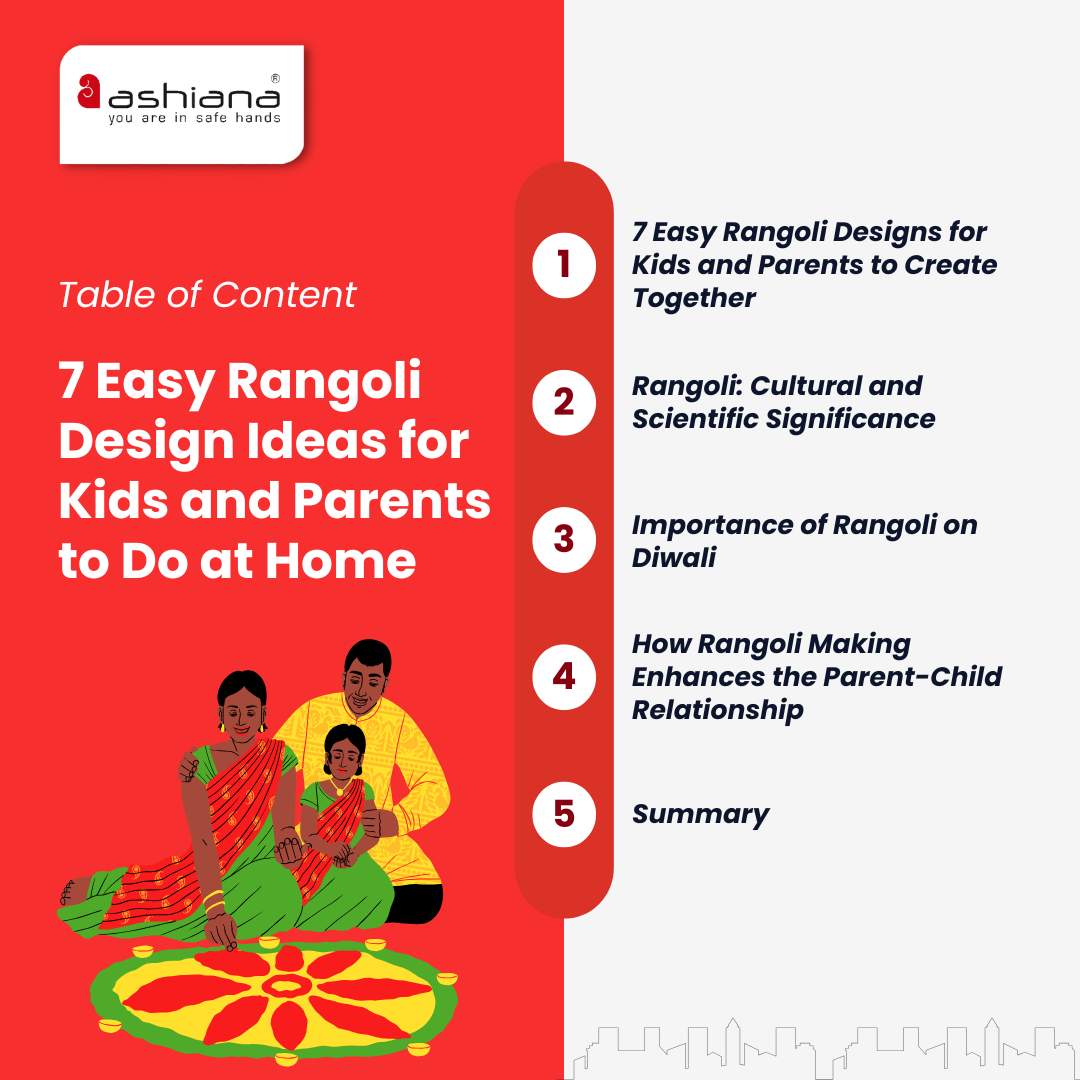

The rangoli represents a household’s happiness, positivity and liveliness, and is intended to welcome Lakshmi, the goddess of wealth and good luck. A Hindu household without a clean entrance and rangoli is believed to be an abode of daridra (bad luck). The purpose of rangoli is beyond decoration.
Fine motor skills – Learning to draw rangoli can help toddlers enhance their fine motor skills. This can also aid children in writing skills. Finger dexterity – The design patterns of rangoli require children to use two or more fingers, which helps to enhance their finger dexterity.
Rangoli is an ancient Hindu art form from India. Derived from the Sanskrit word ‘Rangavalli’, it means rows of colours. It is drawn in homes, courtyards, and sometimes even on walls to celebrate auspicious occasions.
Ashiana, Ashiana Housing build homes. Homes surrounded by vast green spaces and fresh breeze. Homes cocooned in secured gated complexes. Homes where futures are forged and there are opportunities to grow. And Homes in environments brimming with healthy activity, trust and respect. At heart, we build communities with care.
Other posts by Ashiana
Join 1000+ of fellow readers. Get expert real estate knowledge straight to your inbox absolutely free. Just enter your email address below.